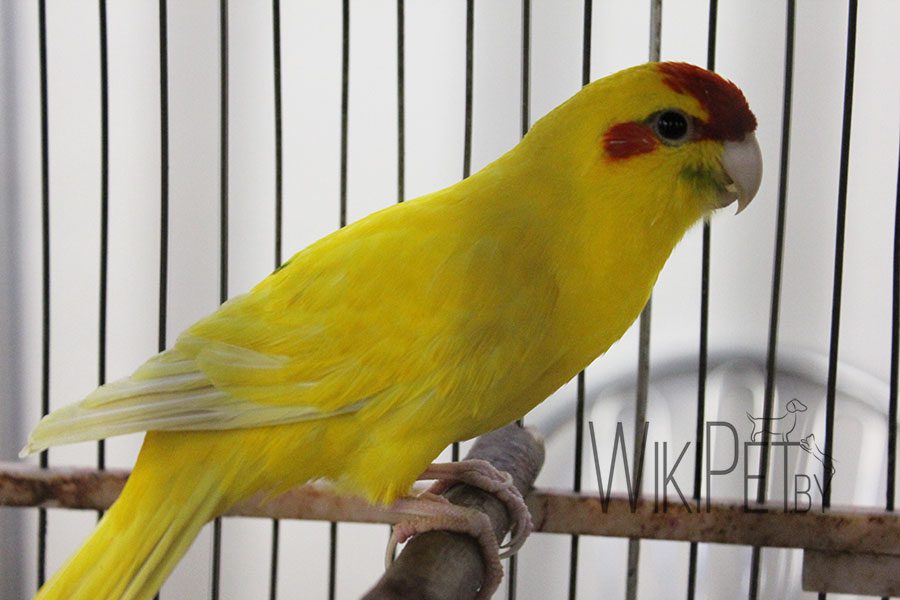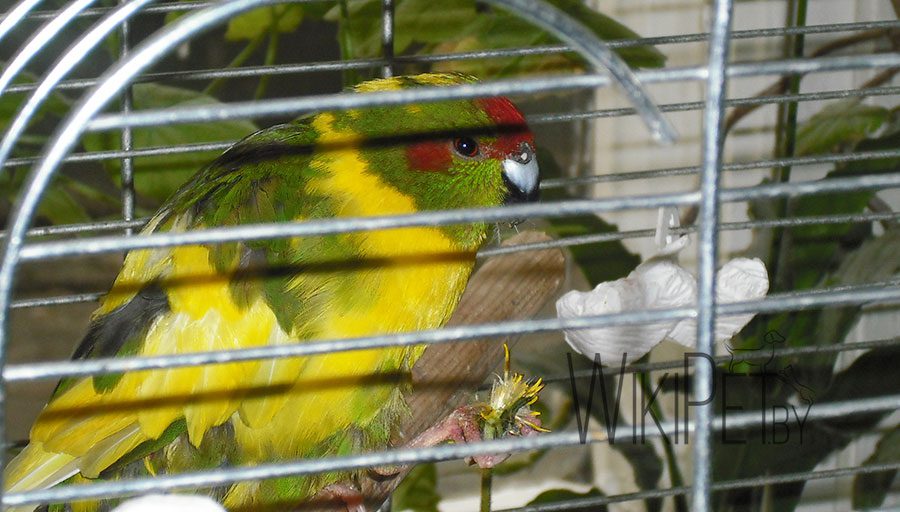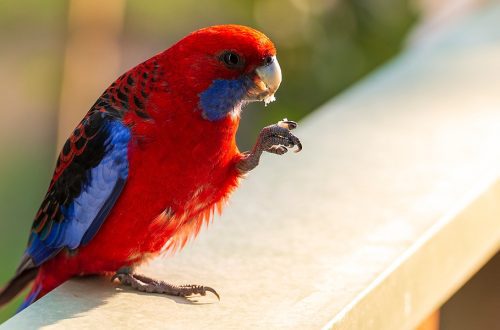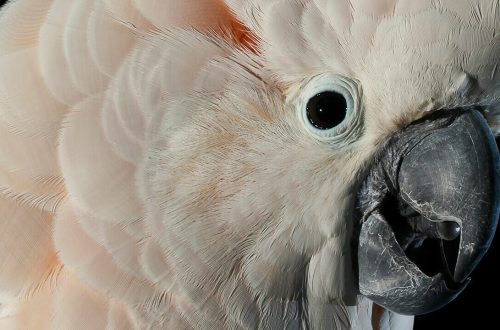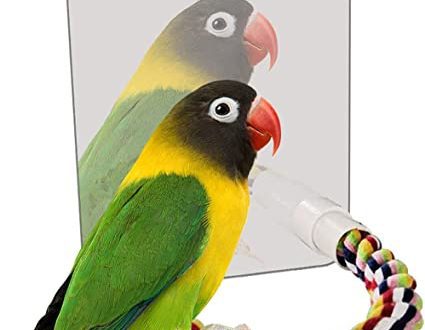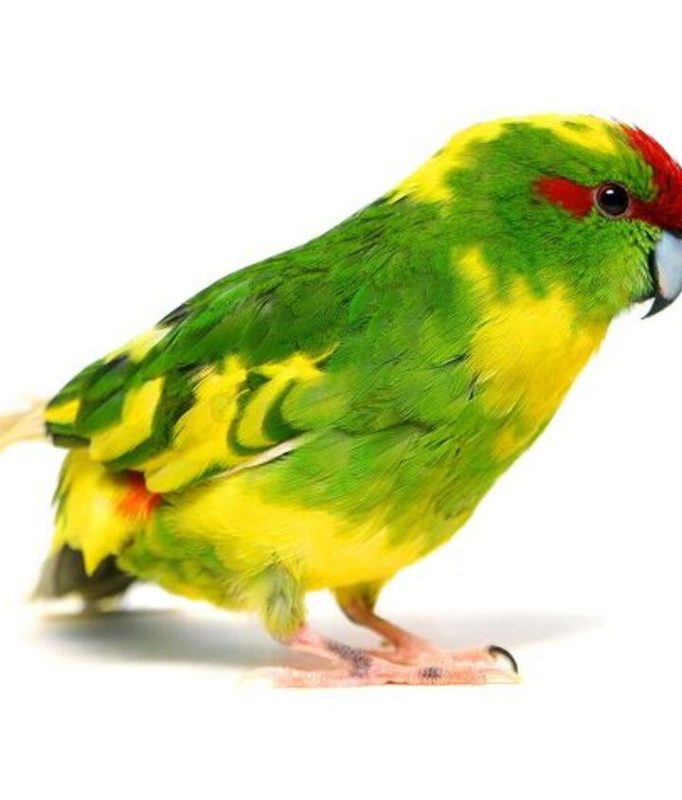
Kakariki (jumping parrots)
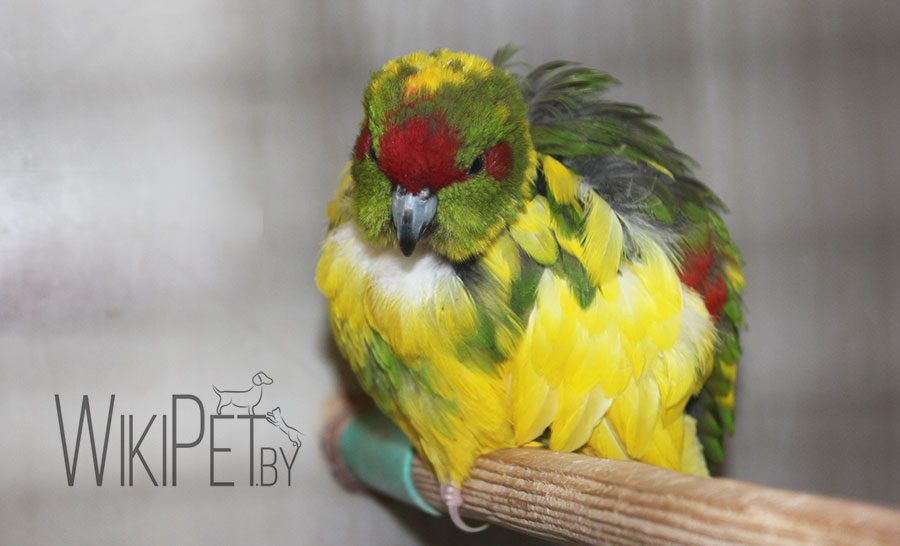 Jumping parrots or kakariki got their name for a reason. They really move on the ground, including jumping. In addition, they are also called goats, since the sounds they make are vaguely reminiscent of bleating. “Kakariki” is a New Zealand Maori word meaning “little parrot” and is a common name for jumping parrots. Just like the name of the bird is unusual, so these parrots themselves are interesting for their unusual behavior, which differs from other average parrots. They are rather calm and quiet birds, you will not hear heart-rending endless screams from them. However, they move a lot, and they can easily move upside down on any surfaces, in a cage or an aviary. Their flight is heavy, they are more willing to walk, they like to be the boss in flowerpots, satisfying their natural desire to dig. It is important to ensure that the aviary and cage are tightly closed, as these birds very easily find their way out through the slightest gap. Jumping parrots eat from a paw. These birds were first brought to Europe in 1872, and they only got to Russia in 1975. Now these birds can often be seen among amateurs, they are in 4th place in popularity among small parrots. Breeders have bred a number of colors. They can easily get along with other, even smaller, bird species. They are not aggressive towards other birds, although they can drive them away from the feeder. There are no abilities to imitate speech. Among the shortcomings, perhaps, one can note a more liquid litter due to the peculiarities of the diet and frequent problems with plumage (long molts). Jumping parrots are quite independent birds and cannot be fully tamed.
Jumping parrots or kakariki got their name for a reason. They really move on the ground, including jumping. In addition, they are also called goats, since the sounds they make are vaguely reminiscent of bleating. “Kakariki” is a New Zealand Maori word meaning “little parrot” and is a common name for jumping parrots. Just like the name of the bird is unusual, so these parrots themselves are interesting for their unusual behavior, which differs from other average parrots. They are rather calm and quiet birds, you will not hear heart-rending endless screams from them. However, they move a lot, and they can easily move upside down on any surfaces, in a cage or an aviary. Their flight is heavy, they are more willing to walk, they like to be the boss in flowerpots, satisfying their natural desire to dig. It is important to ensure that the aviary and cage are tightly closed, as these birds very easily find their way out through the slightest gap. Jumping parrots eat from a paw. These birds were first brought to Europe in 1872, and they only got to Russia in 1975. Now these birds can often be seen among amateurs, they are in 4th place in popularity among small parrots. Breeders have bred a number of colors. They can easily get along with other, even smaller, bird species. They are not aggressive towards other birds, although they can drive them away from the feeder. There are no abilities to imitate speech. Among the shortcomings, perhaps, one can note a more liquid litter due to the peculiarities of the diet and frequent problems with plumage (long molts). Jumping parrots are quite independent birds and cannot be fully tamed.
Contents
Keeping jumping parrots (kakariki) at home
The best for birds will be paired content. A spacious long cage is suitable for their maintenance, and preferably an aviary with dimensions of 85x55x90 cm. It should not stand in direct sunlight, in a draft or near heating appliances. Special sand or granules can be poured onto the bottom, the bird will be happy to dig up the filler in search of food. Perches with bark of suitable size and thickness should be installed in the cage. If possible, install special perches for grinding claws, otherwise you will have to cut the claws of the bird yourself. Feeders are best placed at the bottom of the cage, they should be heavy so that the bird does not turn them over. Place a drinking bowl with water higher. You can also put a few toys, ropes in the cage so that the bird can entertain itself in your absence. But the best entertainment for these birds will be a walk outside the cage. Provide a safe space for your feathered pet, these parrots can easily catch their claw on a curtain or carpet and dislocate or break their paw. It is better to make a safe stand for the bird, place toys there, you can have several flowerpots with plants allowed to be eaten.
Nutrition of jumping parrots (kakarikov)
There are some differences in the diet of these parrots. The diet should consist of 60 – 70% of juicy and soft food. These should be allowed fruits and vegetables, they are very fond of various seasonal berries. Offer birds undercooked cereals without additives, sprouted and steamed grains. Do not forget about grain feed (suitable for medium parrots, but without sunflower seeds), birds also need it. The cage should also have a mineral mixture, chalk and sepia. For succulent and soft foods, there should be a separate feeder that is easy to clean. Soft food has a short shelf life, so everything that the birds have not eaten needs to be removed after a while. Nuts can only be offered to birds as a treat.
Breeding jumping parrots (kakarikov)
Jumping parrots are fairly well bred in captivity. For breeding, select birds of different sexes, they must be at least a year old, molted, healthy and moderately well-fed. During breeding, even tame birds can be aggressive. It is better for this time to place the ear in a quiet and secluded place at the level of the person’s eyes. It is necessary to prepare a nesting house in advance. Since the offspring can be numerous, the house should be 25x25x38 cm in size, with a notch diameter of 7 cm. Two weeks before hanging the house, the birds must be prepared. To do this, gradually increase the daylight hours to 14 hours with the help of artificial lighting. We introduce protein-rich food (boiled egg) and germinated food into the diet. We hang the house with filler (it can be shavings of deciduous trees, coconut soil). These birds are very affected by dry air, it is necessary to maintain humidity at a level of at least 60%. To maintain moisture in the nest, the female must bathe frequently and bring moisture to the nest with her plumage. After the appearance of the first egg, protein foods should be removed from the diet. After the appearance of the first chick, return to the diet. Young chicks leave the nest feathered at the age of 1,5 months. Their parents feed them for a while.



